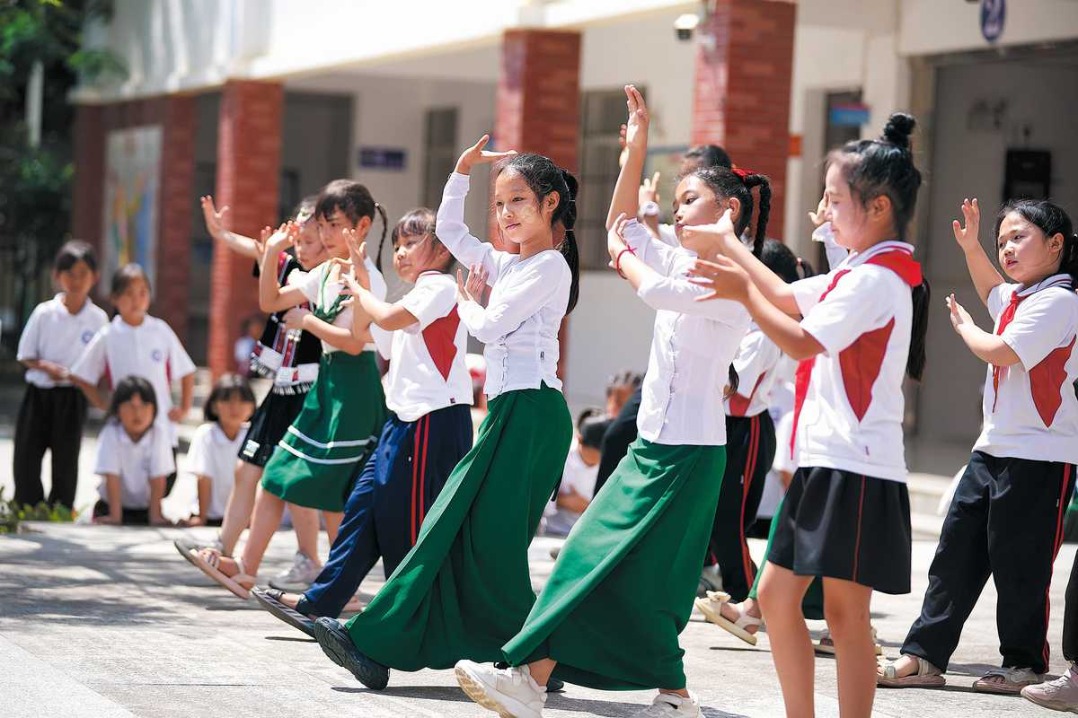Japan’s plight highlights global issue of falling birthrates

Japan's another record-low births in 2022 caused a global stir, pointing to the problem relevant to a host of countries that despite of extensive efforts it is just hard to reverse falling birthrate.
Just 799,728 babies were born in Japan last year, the lowest since 1899 and the first time the number has ever dipped below 800,000, according to the country's Health Ministry.
The news prompted Prime Minister Fumio Kishida to warn that it is "now or never" for Japan in solving its population crisis.
During a speech in January, Kishida said low fertility rates had pushed the country to the brink of dysfunction. The pension and healthcare systems were sliding to insolvency, and the national debt was soaring, he said.
To tackle the issue, his government has reportedly allocated 4.8 trillion yen ($35.3 billion) in the fiscal 2023 budget to a new agency dedicated to children and families.
Yoshihiko Isozaki, the deputy chief cabinet secretary, said the Japanese government will lay out its child and child-rearing policies by June and will double the respective budgets.
"We recognize that the falling birth rate is a critical situation," Isozaki said. "My understanding is that various factors are intricately intertwined, preventing individuals from realizing their hopes for marriage, childbirth, and child-rearing."
Shocked by a record-low fertility rate of 1.57 in 1989, Japan introduced a series of emergency measures to lift the birth rate. The fertility rate, however, has continued to drop, reaching 1.3 in 2021, although the country has received praise for policies such as those to promote fathers' involvement.
Fertility rates are used globally to measure the average number of babies a woman is projected to have in her lifetime. Demographers say that if the number falls below 2.1, the size of a population will start to fall, meaning a country's population can only grow without net inward migration if couples have at least 2.1 children on average. And that needs to be higher to maintain replacement in nations with a high child mortality rate.
Some countries continue to see their populations grow, especially in Africa, but population stagnation and a declining fertility rate have occurred almost everywhere else. Ghost villages are appearing in Japan, maternity wards are shutting down in Italy, and South Korean universities are having a hard time finding students.
Although some people argue that a population decline can ease pressure on natural resources, experts say the negative consequences are starker, as it can lead to an inverted age structure, meaning a majority of elderly people in a society.
"The structure threatens to upend how our societies are organized," said Yu Qiang, a professor at Beijing Technology and Business University. "We assume that in society, a surplus of young people will drive economic growth and pay for healthcare for the elderly. But that concept needs to be changed in countries with a population decrease.
"Plus, a lot of things we are now familiar with will have to be changed, such as streets, houses, offices, traffic systems, and our ideas on consumption and retirement," he said.
Takuya Hoshino, a senior economist at Dai-ichi Life Research Institute, has predicted that Japan's working population will shrink to below 63 million in 2040, down from about 69 million in 2019, which in turn will "pull down the GDP growth rate to under 0.5 percent in the 2030s and cause economic shrinkage in the following decade".
Yu said that, as falling birthrates become a global issue, governments can better prepare by getting more involved in child-bearing and in children's socialization.
"Socialization is the process by which children are raised and educated to become successful members of society," he said. "This requires learning the knowledge, skills, ideas, and values needed to function competently in society and, more broadly, it requires culture to be transmitted or reproduced in each new generation.
"Under the assumption we need a more talented and sophisticated new generation to face a more complicated world, many parents today are no longer capable of teaching their children in that way," he added. "This is where the government should get involved, by providing professional guidance while parents focus more on loving and caring for their children."































